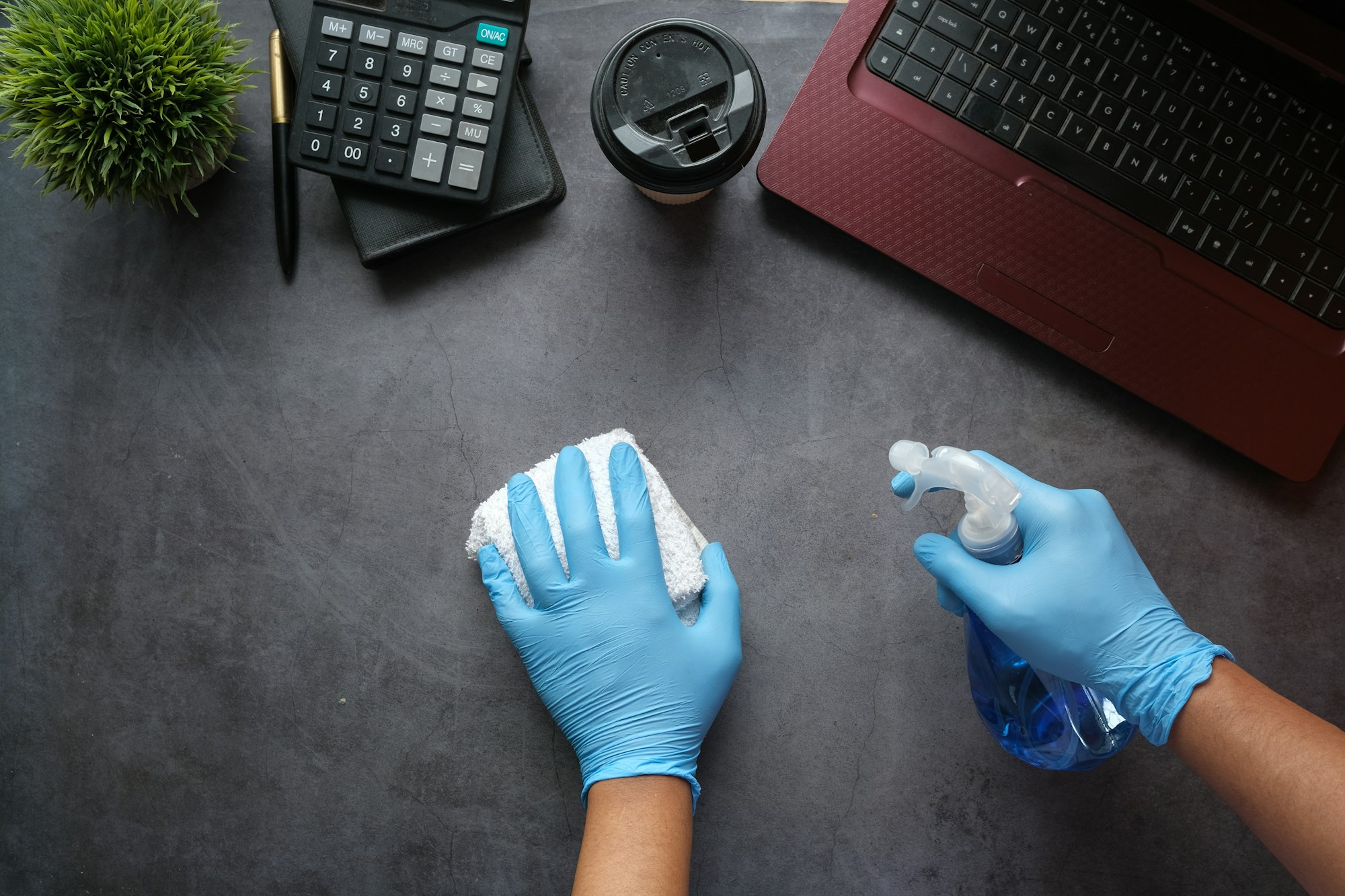Table of Contents
The proper hardware makes all the difference regarding convenience and overall function. As the average workspace continues to change, manufacturers are developing solutions to ensure employees have a comfortable and safe experience at work. And with the pandemic still at the forefront, designers and manufacturers are not only keeping a close eye on what's in demand. Still, they are also forced to keep up with evolving regulations.
Large companies must beef up their current strategies, offer flexibility, and prioritize their employees' health, safety, and well-being. In addition, they'll need to rethink their office space to meet new health and safety considerations by practicing social distancing and investing in products that will keep the virus from entering their workforces.

ANTIMICROBIAL SOLUTIONS
"We're never going to stop seeing the promotion of antimicrobial surfaces and safe workspaces," said Billy Peele, marketing director for Mockett. "It's the new normal. Businesses can promote safe workspaces and commercial spaces with multiple users and shared users by offering a safer new antimicrobial finish alternative on touch surfaces."
Mockett recently designed its latest product offering, DP3 Tab Pulls, with antimicrobial coating on Satin Chrome and Nickel finishes.
Peele also explained that with the proper hardware, it shouldn't be difficult for businesses to make these adjustments, and many can start with simple ways like panel partitions and configurable solutions for privacy screens that don't need to be bolted down or installed into the furniture.
“Panels that can be easily relocated for special projects will be most beneficial. He added that they’re also great for open dining areas where party sizes fluctuate or where privacy screens are needed,” he added.
An impressive array of antimicrobial materials are being specified to ensure the post-COVID hospitality experience remains a safe— and healthy—one, according to MatchLine Design Group's Sarah Bell.
"This includes silver, copper, and brass—which have a long history as antimicrobials, evidenced by Greek, Egyptian, and Roman accounts. Designers are trying to find unique and efficient methods to refresh spaces that don't 'break the bank.'"

ERGONOMIC WORKSPACES
While most solutions have revolved around safety protocols and sanitary guidelines, a straightforward suggestion is to create a softer side by bringing home comforts and flexibility through products and design.
"Adding residential-inspired products can help reduce stress and anxiety from transitioning back to the office and promote productivity during these pressured times of uncertainty. Incorporating tactile textures, materials, accessories, and multi-sensory elements can be more inviting while evoking a sense of ease and normality," said Gina Maruschak, communications director for design firm Luxxbox.
According to Felicitas Wolter, marketing manager for Hettich, an attractive office environment with flexible and ergonomic workplaces plays a big part in a company's competitiveness.
"Power adjustable desks that give employees the choice of working either sitting down or standing up play a crucial part believe it or not."
“You want products that leave no margin of doubt with design flexibility in furniture making and the greatest possible stability for the user. Having the flexibility of working, either sitting down or standing up, is good for your health and boosts work productivity. Desks with a power-assisted height adjustment capability that can easily be set to any chosen height at the press of a button are ideal,” she added.

HIGH-TRAFFIC WORKPLACES
Understandably, there's a significant focus on solutions for high-traffic areas. Many essential businesses have already adopted such procedures. Still, as more companies start to bring employees back to work, manufacturers will focus on producing products that limit the spread of bacteria in high-traffic areas.
"Automation and touchless technology are the next major focus areas for research and development in the hardware industry, especially with the onset of the COVID-19 pandemic," said Qianyan Cheng, INOX co-founder and Vice President of Product Development. "Most electrified commercial mortise locks still require touching the door lever to release the latch and open and close the door itself. The goal is to eliminate this and provide a key solution towards a truly touchless door control system."
Even thinking beyond the office, companies must consider all areas of use. That includes shared public restrooms and kitchen spaces.
"Key protocols we've been focusing on include occupancy limits, signage or 'signaling,' queuing, door entry, and active use of restroom fixtures and hardware," said Lee Pasteris, NCIDQ, design director and principal at Gensler.

OVERALL CONVENIENCE
During uncertainty and constant change, one thing that will stay the same is the desire for convenience and easy maintenance.
"People need the sense of convenience now more than ever, especially the folks working from home," said Austin Snyder, marketing director for Blum. "They want easy maintenance and comfort. Things like soft pull-out drawers and mix-and-match shelving that suits each user's individual needs go a long way," he added. "Sometimes little things go a long way." According to INOX's Kathy Swanson, hardware that connects swiftly and efficiently is another vital trend. "People want faster installation. They want fewer parts.
Workers across the globe are setting up shop at home, many without help, and they need relatively maintenance-free hardware products," she added.
Companies are putting health at the forefront and developing new products and solutions that will cater to any style of office space, whether communal or home office. Indubitably, the workplace will never exceptionally be the same again.






